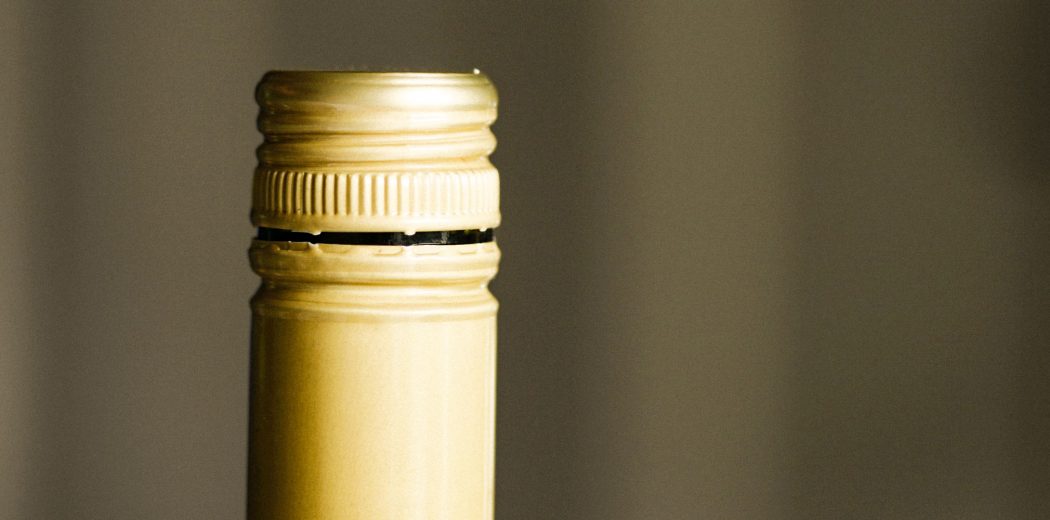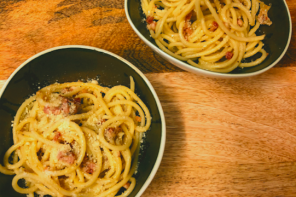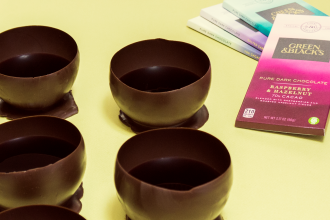Right now, as you read this, families are divided, brother against brother, sister against sister, cat against dog. What is polarizing the world, causing nations to crumble and friends to get slightly upset at other friends? The cork vs. screw top debate — that’s what. You may have heard statements like: Corks are old fashion, like a horse and buggy in the age of the automobile. Or: Screw tops are cheap, like an H&M sweater; they’re a fad. But who is right? On which side should you take up arms? Well struggle no longer. Wine Awesomeness has implored scholars and a guy who kind of looks like a scholar; we’ve forced down liter after liter of wine in the hopes of uncovering this ancient mystery. So please, put down your mace and flail and lend us your ear, because today the battle ends.
Let’s start at the beginning: the cork, well technically the cork tree (who knew, right?). Corks are made from cork oak (Quercus suber), which are native to southwest Europe and northwest Africa. The tree forms a thick layer of bark that once it reaches the right thickness is harvested and processed into wine corks, as well as flooring and a ton of other useful stuff. What’s truly unique about this process is that unlike almost all other products made from trees, cork is a completely renewable resource. The harvesting of cork doesn’t damage the tree and so they are left uncut and allowed to continue to grow and provide a habitat for a number of endangered species. Not as wasteful as you thought, huh?
Next, we have the vile, despicable screw top, coming in and trying to disrupt the industry. But where did they come from? From what pit did this scoundrel crawl out of? New Zealand?! Really? Yep, those mild-mannered, dreadlocked Kiwis are responsible for turning the wine world on its head. But why? Why veer from tradition? Like most innovation, the answer was necessity. Since cork is only stripped in nine-year intervals, a spike in demand doesn’t equate to a quick turnaround on the supply, so the cork companies weren’t necessarily scrambling to provide the developing areas of the wine-producing world (like New Zealand) with the best corks. This meant that these regions were receiving subpar corks that were more likely to produce cork taint. Not wanting their juice to taste like wet, moldy newspaper, the New Zealand wineries decided to take matters into their own hands and began using screwtops. The idea of screw tops for wine had existed since the 1970s but consumers had been slow to accept change. And how do you change the minds of consumers? Through clever marketing of course. New Zealand winemakers teamed up with their Australian counterparts and began the brilliant campaign known as The International Screw Top Initiative, which launched a dual front: focusing not only on consumers but also targeting the producers. Skip forward a decade and a half and we have the “overnight success” of screw tops.
So what’s the WA crew’s opinion of screw tops? We don’t care! We could give two spits if Saran Wrap covers the tops of bottles as long as the juice inside is awesome. For wines that are meant to be consumed young, like whites, rosés, and fresh styles of reds, screw tops are perfect because these wines don’t need to breathe. For wines that need a little age to come together, corks are really the only way to go for now; however, we’ve heard talk of a breathable screw top in the works. The way we see it, whatever is new is always scary, and many people are so stuck in doing things the way they’ve always been done that they have a hard time accepting unfamiliar technology. Kind of like my grandfather, who in the late 80s claimed that computers were a fad. Sorry Grandpa, but I can’t waste two hours a day watching videos of dancing babies on an abacus.
So, what did we learn through all of this? We learned that sometimes there isn’t an answer, sometimes it’s the question that creates the conflict. It’s not corks vs. screw tops; it’s corks AND screw tops!










I shop for screw top wines. I don’t drink cheap wine.
Screw tops contain many expensive liquors and have for decades.
My main complaint with screwtops is mainly that, I had a run of “wine club” (wont say who) shipments that were just, bad, cheap, lacked body, I love BIG red wines and these just didn’t cut it.
As I looked at the row of bottles from previous months I noticed something…when I started getting screwtops, I started getting worse wine.
I think this has less to do with the top on the bottle and more to do with the simple fact that they are cheaper. It just makes sense that more cheap wines would have screwtops, but correlation as they say is not causation, screw tops don’t make cheap wine, but cheap wine seems to prefer screwtops.
My opinion is above but here’s another look:
http://winefolly.com/tutorial/corks-vs-screw-caps/
Gallo winery used screwtops long before 1970
I prefer the corks as they seem to keep wine fresher.
I like my coravin wine system and can’t use it on synthetic cork or screw caps (Obviously not screw caps). Right now I have 4 bottles that I have “tapped” and couldn’t do this with screw caps. Cork it is for me unless I buy a wine with the intention of finishing it.
I worked at Bonny Doon Vineyard in 2001 and we were the first winery to commit to 100% screw cap closures on all of our wines. The decision wasn’t taken lightly and all of the senior staff carefully reviewed the evidence at hand. Many wineries have done experiments to find a better closure. Case in point, Penfolds has been doing side by side longitudinal testing on wines finished with cork and screw caps that were bottled in the 70’s. Thirty years later, thorough analysis have shown irrefutable evidence that screw caps are much better for both recently bottled and library wines. It’s an added bonus that since the screw caps are manufactured rather than harvested, there is little if any differences between screw caps. The one caveat is that winemakers who are new to bottling their wines in screw caps must be conscious of how the wines age differently (more eloquently) in the new closure and make sure they finish the wines accordingly before bottling them.
Yeah, but who wants to see someone’s collection of screw caps?
Where possible, you should choose cork over screw tops.
Cork forests provide essential habitat to endemic and endangered species. Cork forests must be actively managed to provide essential habitats otherwise the forests become parking lots and condos. Supporting natural cork also helps the local Portugal economy. Check out the WWF report Cork Screwed for more information.
Cork decomposes naturally, stores carbon naturally and is carbon negative, whereas screwtops are man-made, using fossil fuels and they do not decompose naturally. I’m not even sure if they can be recycled. It really is cork OR screw top.
Renewable resource, readily biodegradable time tested closure = Cork. The ecosystem is important and without the cork forested southern Portugal, southern Spain and a Chunk of North Africa would loose several hundred species and look like the Sahara desert. But of course you need to own a cork screw. It takes approximately 20 years for a cork Oak to produce bark suitable for traditional corks so it is neither for those who wish to get rich quickly, nor suitable for abrupt and massive increases in demand. Cork production processes are also environmentally friendly.
Screw tops are convenient, no corkscrew needed, They are made from extracted, non renewable materials that will biodegrade poorly if at all, and the extraction and production processes are high pollution producers.
I have had excellent wines under both closures. That said, I prefer, and Sunset Winery uses cork closures because of the environmental considerations noted above. Whatever the closure it is all about whether or not you like what it protects.
How about settling this issue once and for all, by using BOTH corks and screw caps….
Does the Som offfer to let one smell the screw cap?!?
Recently in Portugal at the Amorim cork facility, had lunch at the founders house, incredible trip.
Takes the cork oak 9 years to produce a 1″ cork bark 18 years for the wine stopper which requires a more thick piece. Each cork that is produced goes through a laser inspection that determines if it has the potential to leak, then they are sorted, best one’s in this bin the others in another bin and some are fully rejected.
Some can be repaired and retested.
Typically the best stoppers are sold at a higher price and go to the most expensive wines, best of the rest go with less expensive wines, best of the scrapes are ground up and champagne stoppers are made from those.
No cork goes to waste, the remainder of the cork including the dust is used to make up flooring, tables, chairs, purses, sandals iv’e seen hats surfboards, snowboards, even parts for the space shuttles and so much more.
The cork industry’s take on the synthetic stoppers is its a fad and the better wines will eventually go back to the cork stopper because its the best option and its sustainable.
I lost a $600 bottle because of a bad cork. I’ve had friends over for dinner and lost a bottle due to a bad cork, embarrassing. Would I prefer a cork? Of course. Caps are practical, corks are a novelty.